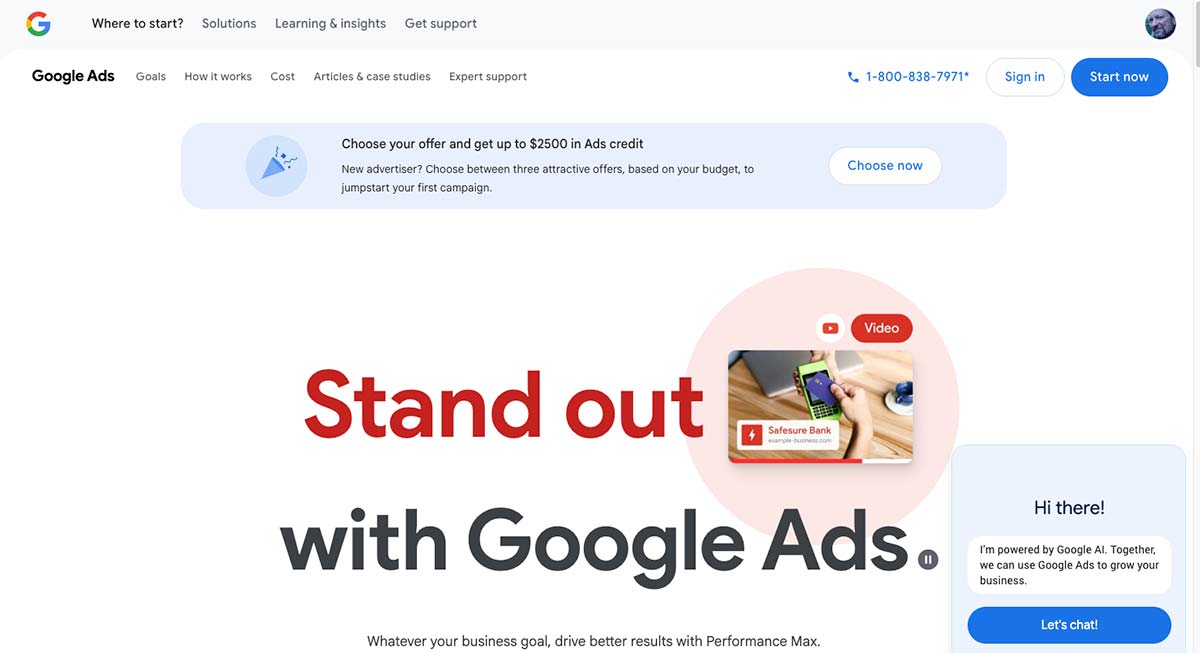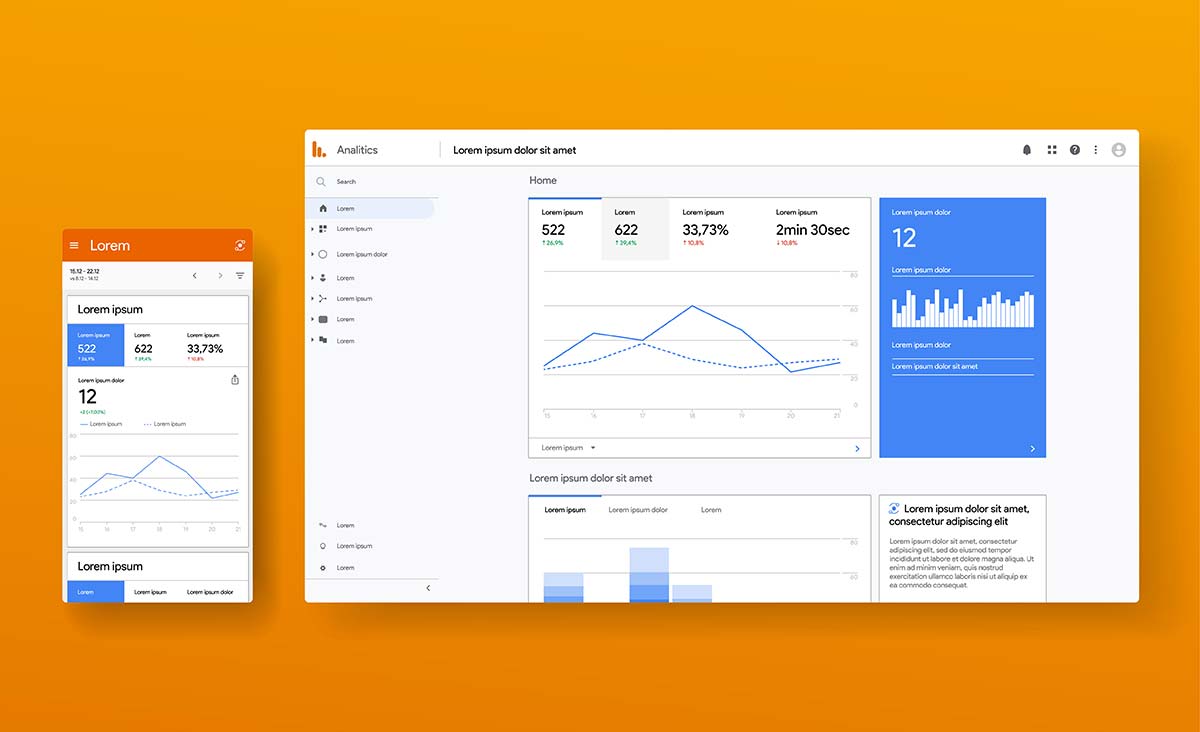Remember Sarah from The Daily Grind? We’ve followed her journey as she built her Boston coffee shop through creative marketing strategies. Like many small business owners, Sarah found herself staring at her monthly sales report with growing concern. Despite creating the most delicious pastries in town and maintaining an active social media presence, her business seemed to have hit a plateau. When a friend suggested investing in paid advertising, Sarah was skeptical. “Isn’t that just for big businesses with massive budgets?” she wondered.
This is a common misconception that many small business owners share. In reality, paid advertising has evolved to become one of the most accessible and effective tools for businesses of all sizes, especially in today’s digital-first marketplace. By the end of this guide, you’ll understand why paid advertising works for small businesses, which platforms deliver the best results, and how to create a strategy that maximizes return without breaking the bank.
Why Paid Advertising Works for Small Businesses
When Sarah first dipped her toe into the world of paid advertising, she started with a modest budget of just $15 per day on Google Ads. She targeted simple keywords like “coffee shop near me” and “best coffee Boston.” Within two weeks, she noticed new faces coming through The Daily Grind’s door, specifically mentioning they found her through an online search.
This illustrates the immediate impact paid advertising can have. Unlike organic methods that might take months to gain traction, paid ads appear at the top of search results and social feeds instantly. For small businesses, this visibility can be transformative, especially when you’re competing against established brands for customer attention.
The real power of modern advertising platforms lies in their targeting capabilities. Sarah wasn’t paying to reach everyone in Massachusetts—just potential customers within a 10-mile radius who had shown interest in baked goods. This precision helps small businesses avoid wasting resources on audiences unlikely to convert, making every advertising dollar work harder.
 Types of Advertising Platforms for Your Small Business
Types of Advertising Platforms for Your Small Business
Not all advertising platforms are created equal, and what works for one small business might not work for another. Understanding the strengths of different types of advertising can help you make informed decisions about where to invest your small budget.
The Power of Search Advertising with Google Ads and Bing Ads
John runs a local plumbing service in Boston. Unlike Sarah’s bakery, his business thrives on urgent needs—when someone’s sink is overflowing at 9 PM, they’re not casually browsing social media for plumbers. They’re desperately searching Google for “emergency plumber near me.”
This is why John allocates 70% of his advertising budget to Google Ads. By focusing on high-intent keywords like “emergency plumber Boston” and “plumbing repair same day,” he connects with customers at the exact moment they need his services. His ads appear at the top of search results, and he pays only when someone clicks.
“I used to spend thousands on newspaper ads that might or might not reach someone who needed a plumber,” John explains. “Now I know every dollar goes toward reaching someone actively looking for what I offer.”
For service-based businesses, Google’s Local Services Ads have been particularly game-changing. These ads appear above regular search ads and feature a “Google Guaranteed” badge, building instant trust. Most importantly, John only pays when a potential customer actually calls or messages him through the ad—not for clicks that might not lead anywhere.
Beyond Local Services Ads, John also employs display ads across the Google Display Network. These banner ads appear on websites that his potential customers visit, featuring eye-catching visuals and clear calls to action that help increase his reach beyond just search results. “Display advertising helps me stay visible to my target audience even when they’re not actively searching for plumbing services,” he explains.
Social Advertising: Building Relationships Before the Sale
While John’s business thrives on immediate needs, Emma’s boutique clothing store benefits from a different approach to online advertising. Her customers aren’t typically searching for specific products—they’re discovering things they didn’t know they wanted while scrolling through social networks like Instagram or Facebook.
“Social advertising lets me tell my business’s story and showcase our aesthetic,” Emma shares. “I can target women between 25-45 who live within 15 miles of my store and have shown interest in sustainable fashion and local businesses. Facebook advertising is particularly powerful because of how precisely you can define your demographic targeting.”
Emma’s strategy focuses on creating visually appealing carousel ads that showcase her latest collections. She uses Meta Pixel on her website to track visitor behavior, which allows her to create Custom Audiences of users who have previously visited specific product pages but didn’t purchase. Then she serves them social ads featuring the exact items they were considering, often with a small discount code to encourage conversion.
This retargeting approach has been remarkably effective. “About 40% of people who abandon items in their cart end up purchasing after seeing our retargeting ads,” Emma notes. “It’s like a gentle reminder that gives them the final nudge to shop online with us.”
For small businesses selling visually appealing products, platforms like Instagram and Pinterest often deliver better results than search advertising. These social media platforms allow you to showcase your products and services in context, building desire through lifestyle imagery that helps customers envision your products in their lives.
Setting a Budget That Makes Sense for Your Business
The question of budget often causes the most anxiety for small business owners considering paid advertising. How much is enough? How much is too much?
James, who owns a small IT consulting firm, approaches his advertising budget with a simple framework: “I look at customer lifetime value first. If a typical client brings in $3,000 in revenue over our relationship, I can afford to spend more to acquire that customer than if they only spent $50 once.”
This value-based approach has helped James make rational decisions about his ad spend. Rather than arbitrarily setting a budget, he works backward from the value of a new customer. If his typical conversion rate is 2% (meaning 2% of ad clicks become customers), and his average customer value is $3,000, he can afford to spend up to $60 per click while maintaining profitability ($3,000 × 0.02 = $60).
Of course, most businesses don’t spend anywhere near that much per click. The point is to understand the economics of your advertising and ensure you’re making profitable investments rather than simply throwing money at platforms without a clear understanding of return.
For businesses just starting with paid advertising, the best approach is gradual. Begin with a modest daily budget—perhaps $10-20 per day on your chosen platform. Monitor results closely for 2-3 weeks, looking for early indicators of which ads, keywords, or audiences are performing best. Then systematically increase investment in what’s working while cutting what isn’t.
“I started with $300 total for my first month of advertising,” recalls Sarah from the bakery. “By month three, I’d increased to $900 monthly because I could clearly see it was bringing in more than enough new business to justify the expense.”
 Targeting Local Audiences: Your Community Advantage
Targeting Local Audiences: Your Community Advantage
Small businesses often have a significant built-in advantage when it comes to advertising: local relevance. Large corporations might have bigger budgets, but they can’t match the authentic community connection that small, local businesses can cultivate through their advertising.
Elena runs a neighborhood bookstore that competes with major online retailers. Her paid advertising strategy leans heavily into local targeting and community-specific messaging. “Instead of just advertising ‘books for sale,’ we highlight our local author events, reading groups, and our knowledge of neighborhood reading preferences,” she explains.
Her Google and Facebook ads mention specific neighborhoods and local landmarks. During Boston’s annual summer festivals, her ads adjust to reference the events, offering festival-goers a discount if they show their festival wristband. This hyper-personalized approach creates relevance that national chains simply cannot replicate.
Geotargeting tools allow businesses like Elena’s to limit their ad visibility to specific zip codes or even a particular radius around their store location. This ensures every dollar is spent reaching people who could reasonably visit, rather than wasting resources on viewers too far away to become customers.
The messaging in locally targeted ads should feel personal and community-oriented. Compare these two approaches:
Generic: “Quality books at competitive prices.” Locally targeted: “Your Back Bay neighborhood bookstore—join our Newbury Street poetry night this Thursday!”
The second approach creates an immediate connection and sense of community that resonates far more effectively with local customers.
Tracking Success and Optimizing Your Approach
David’s small accounting firm had been running the same Google Ads campaign for six months. The ads were generating clicks, but he had no idea whether those clicks were turning into clients. Like many small business owners, he was advertising blind—spending money without clarity on his return.
Everything changed when David implemented proper tracking. By setting up Google Analytics, adding UTM parameters to his ad URLs, and creating dedicated landing pages for each campaign, he gained visibility into the entire customer journey. The insights were eye-opening.
“I discovered that my ads targeting ‘tax preparation’ were getting lots of clicks but almost no conversions,” David shares. “Meanwhile, ads for ‘small business accounting’ were getting fewer clicks but converting at four times the rate. I was able to shift my budget toward what was actually driving business, not just traffic.”
This kind of measurement and optimization is what separates successful advertising from money wasted. Small businesses can’t afford to “set and forget” their campaigns. Instead, they need to adopt a continuous improvement approach:
- Start with clear hypotheses about what might work
- Test those hypotheses with initial campaigns
- Measure results using proper tracking tools
- Analyze what’s working and what isn’t
- Adjust campaigns based on data, not hunches
- Repeat the process to continuously improve
For most small businesses, the key metrics to focus on include:
- Cost Per Acquisition (CPA): How much are you spending to acquire each new customer?
- Return on Ad Spend (ROAS): For every dollar spent on advertising, how much revenue are you generating?
- Cost Per Lead (CPL): How much are you paying for each potential customer who contacts your business?
These metrics provide a clearer picture than surface-level statistics like impressions or clicks, which might look impressive but don’t necessarily translate to business results.
 Moving Beyond the Basics: Advanced Strategies for Growth
Moving Beyond the Basics: Advanced Strategies for Growth
Once you’ve established a foundation with paid advertising, there are numerous ways to refine your approach for even better results.
Emma from the boutique clothing store initially found success with basic retargeting ads, but she’s since evolved her strategy. “Now we use our customer database to create lookalike audiences—people who share characteristics with our best customers but haven’t shopped with us yet,” she explains. “These campaigns have opened up entirely new customer segments we weren’t reaching before.”
Video ads have become another powerful tool for small businesses looking to stand out. John the plumber created simple 30-second videos demonstrating common problems his service addresses. “People connect with video in a way they don’t with text or images,” he notes. “When they see me explaining how to spot signs of a water leak, they not only engage more with the ad but also remember our company when they need help.”
Small businesses are also finding success with collaborative advertising approaches. Elena’s bookstore partners with the café next door for joint advertising campaigns promoting their businesses together—”Grab a pastry and find your next great read”—allowing them to share costs while creating a more compelling offer.
Evaluating Your Digital Advertising Strategies
As your advertising campaigns mature, it becomes essential to evaluate which types of advertising deliver the best results for your specific business. Many businesses find that a combination of search, social, and display advertising creates a comprehensive approach that covers the entire customer journey.
“We track the likelihood of converting from each ad channel,” Sarah from The Daily Grind explains. “We’ve found that search ads are great for immediate sales, while social ads help boost our leads for the long term. Display ads keep us visible and help with brand awareness even when people aren’t actively searching.”
Understanding this performance data helps you make informed decisions about where to invest your advertising dollars, ensuring you maximize return while growing your business sustainably through targeted digital advertising services.
How Cider House Media Helps Small Businesses With Paid Advertising
At Cider House Media, we’ve guided dozens of New England small businesses through the process of establishing effective paid advertising campaigns. We understand that for local businesses, every advertising dollar needs to generate tangible results.
When Sarah from our bakery example first approached us, she was overwhelmed by options and uncertain where to begin. Our approach started with understanding her business goals, target customers, and competitive advantages. From there, we developed a customized strategy that aligned with her budget and growth objectives.
Rather than treating paid advertising as an isolated tactic, we integrate it into a broader digital strategy that includes your website, content, and overall online presence. This ensures that when customers click your ads, they encounter a consistent experience that guides them toward conversion.
Our team handles every aspect of campaign management—from keyword research and audience targeting to ad creation and performance optimization. Throughout the process, we provide clear, jargon-free reporting that shows exactly how your investment is performing and what adjustments we’re making to improve results.
 Advertising Tips for Small Businesses with Limited Budgets
Advertising Tips for Small Businesses with Limited Budgets
The most important thing to remember about paid advertising is that it’s not about spending the most money—it’s about spending money in the smartest way possible. Here are some practical advertising tips for small business owners operating with a modest marketing budget:
Focus on High-Intent Opportunities
“When you have a small budget, you need to be laser-focused on where you invest,” advises David, the accountant we met earlier. “I prioritize PPC advertising that targets users who are already looking for what I offer rather than trying to build awareness from scratch.”
This means targeting keywords and audiences with clear purchase intent, investing in retargeting campaigns to reach warm prospects, and focusing on bottom-of-funnel advertising before broader awareness campaigns.
Drive Traffic to Your Website Effectively
Having an optimized website is crucial, but getting people to visit it is equally important. Emma has found success using social ads specifically designed to drive traffic to her website, where the full shopping experience awaits.
“I used to create ads that tried to sell products directly,” she explains. “Now I focus on creating curiosity and interest that makes people want to click through to learn more. This approach has increased our site traffic by 65% while keeping our cost per click affordable.”
When designing ads that appear across multiple channels, ensure they’re mobile-friendly with concise text, fast-loading landing pages, and high-resolution visuals. With over 60% of searches now happening on mobile devices, optimizing for the mobile experience is no longer optional.
Ready to transform your small business with strategic paid advertising? Contact Cider House Media today for a consultation. We’ll help you develop an approach tailored to your unique business needs and growth objectives.
Looking for more ways to enhance your small business marketing? Check out our guide to Top 11 Small Business Marketing Strategies in 2025.



